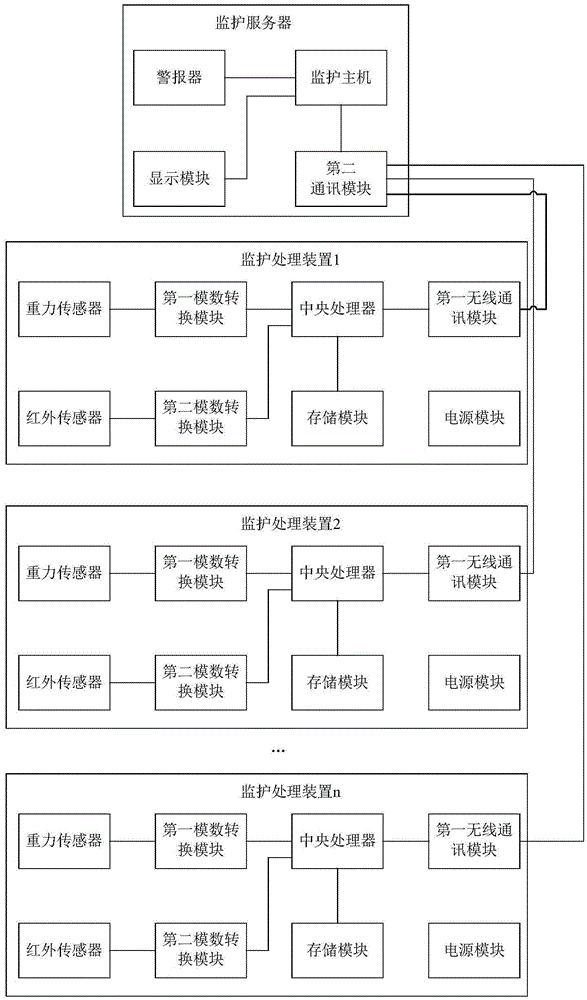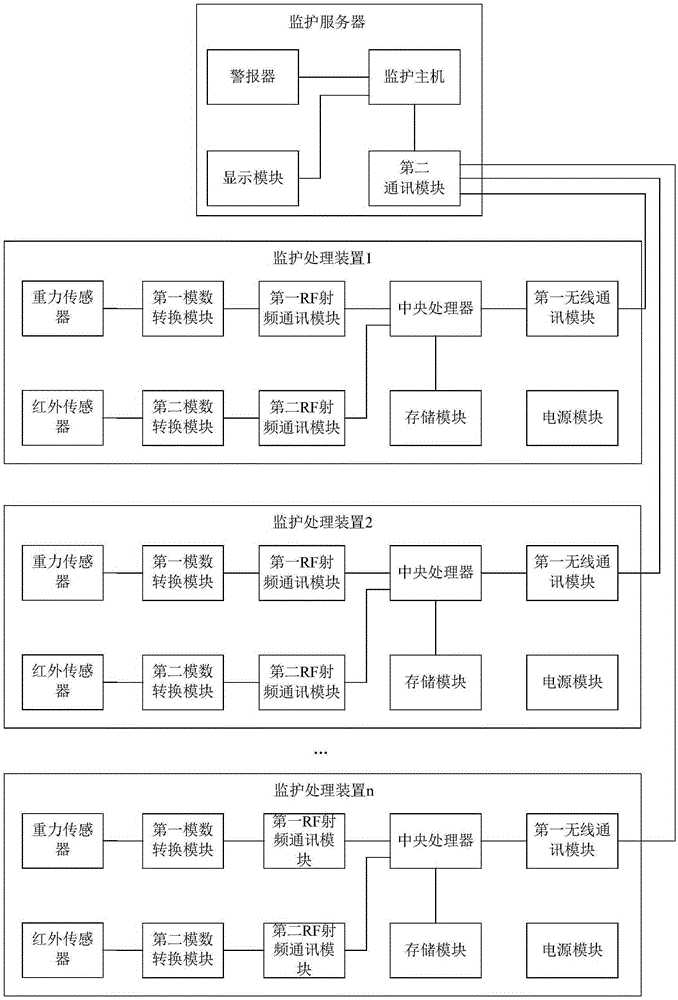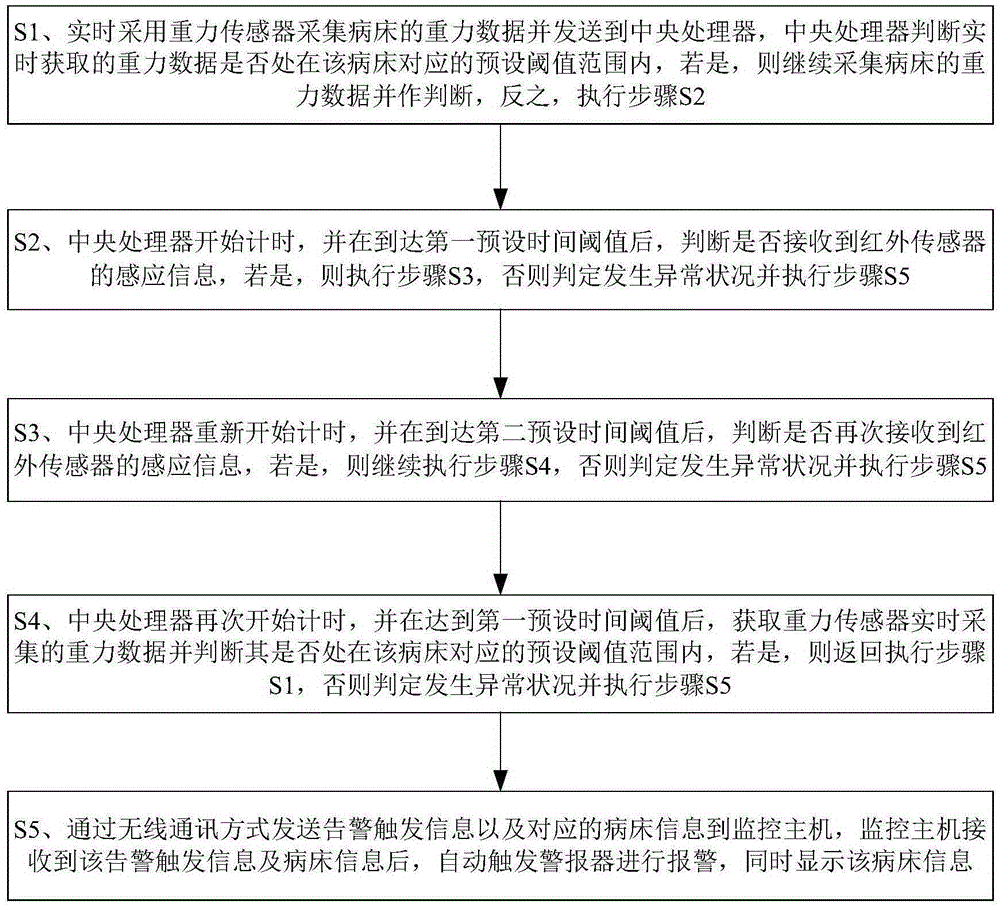A wake-up monitoring system and method for a ward
A technology of hospital beds and wards, applied in the field of monitoring of wards, can solve the problems of fewer nurses, more manpower, and more patients, so as to meet the needs of nursing, protect privacy, and reduce the number of nursing staff.
- Summary
- Abstract
- Description
- Claims
- Application Information
AI Technical Summary
Problems solved by technology
Method used
Image
Examples
Embodiment 1
[0045] refer to figure 1 and figure 2 , a wake-up monitoring system for a ward, comprising a monitoring server and a plurality of monitoring processing devices respectively arranged in each ward, the monitoring processing device including a central processing unit, a storage module, a first communication module, a first analog-to-digital conversion device, the second analog-to-digital converter, the gravity sensor installed on the back of the bed, and the infrared sensor installed at the door of the toilet in the ward. The gravity sensor is connected to the central processing unit through the first analog-to-digital converter, and the infrared sensor is connected to the central processing unit through the second The converter is connected to the central processing unit, and the storage module and the first communication module are both connected to the central processing unit;
[0046] The monitoring server includes a monitoring host, a second communication module, a display...
Embodiment 2
[0054] refer to image 3 , a monitoring method for getting up in a ward, comprising:
[0055] S1. Use the gravity sensor to collect the gravity data of the hospital bed in real time and send it to the central processor. The central processor judges whether the gravity data obtained in real time is within the preset threshold range corresponding to the hospital bed. If so, continue to collect the gravity data of the hospital bed and send it to the central processing unit. Make a judgment, otherwise, execute step S2.
[0056] S2, the central processing unit starts timing, and after reaching the first preset time threshold, judges whether the sensing information of the infrared sensor is received, if so, executes step S3, otherwise determines that an abnormal situation occurs and executes step S5; receives the infrared sensor The sensing information of the sensor indicates that a patient has passed by, if it is not received, it means that no patient has passed by, and the patien...
PUM
 Login to View More
Login to View More Abstract
Description
Claims
Application Information
 Login to View More
Login to View More - R&D
- Intellectual Property
- Life Sciences
- Materials
- Tech Scout
- Unparalleled Data Quality
- Higher Quality Content
- 60% Fewer Hallucinations
Browse by: Latest US Patents, China's latest patents, Technical Efficacy Thesaurus, Application Domain, Technology Topic, Popular Technical Reports.
© 2025 PatSnap. All rights reserved.Legal|Privacy policy|Modern Slavery Act Transparency Statement|Sitemap|About US| Contact US: help@patsnap.com



